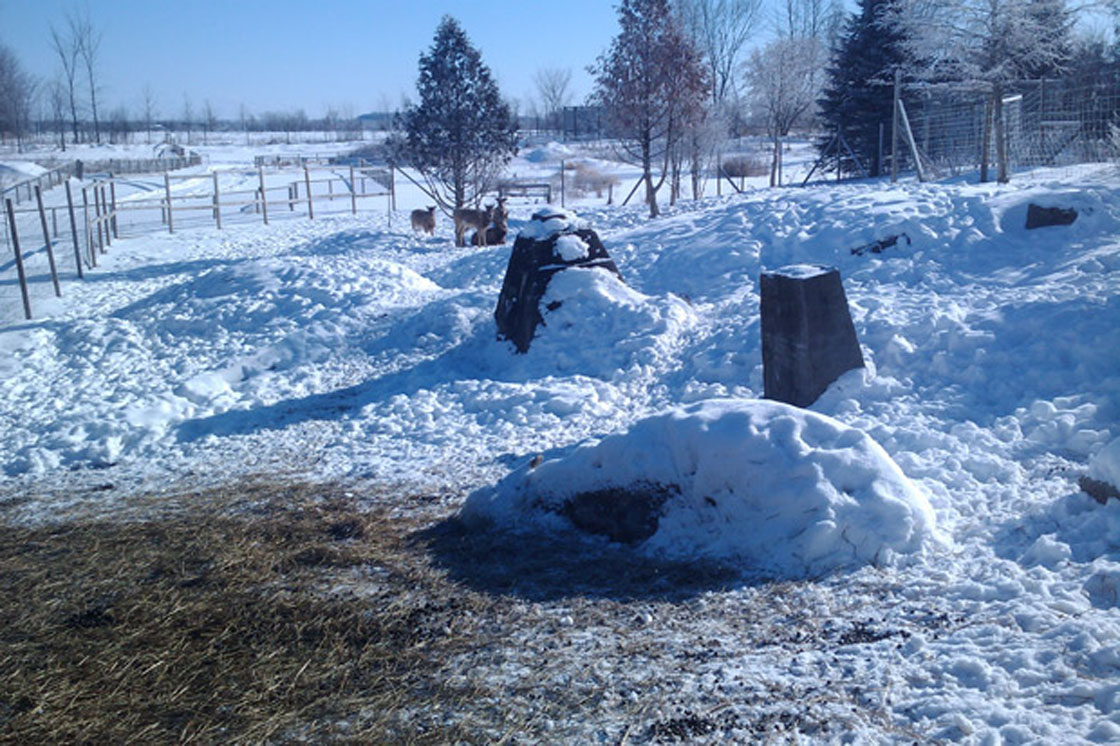A member of Ontario’s Society for the Protection of Animals did not investigate complaints that would have revealed animal mistreatment at Papanack Park Zoo in Wendover, Ontario, according to former employees.

Kent Allen, who worked at the zoo from the summer of 2010 to February 2011, says that a member of the OSPCA failed to return to Papanack Park Zoo after Allen warned that they had been misled by the zoo’s owner, Keith Forgie.
Allen says that OSPCA inspector Bonnie Bishop visited Papanack Park Zoo sometime around January 2011 after a former employee informed them of the death of Wilbur, a water buffalo.
Upon arriving, Bishop was told that Wilbur had died several months earlier, and had already been disposed of; but according to Allen, he had died of exposure in December 2010, and was still frozen to the ground behind Forgie’s home.
Allen, who was not on shift that day, says he does not believe that Bishop visited the entire zoo, but rather only inspected the barn across the road where many of the animals are held in the winter. He says he called Bishop later that night to inform her that she had missed parts of the zoo in her inspection.
“We sat on the phone for a long time that night, and I went over everything, from the lack of food for the bears because they weren’t hibernating, to the lack of fresh water… she sounded like she was going to follow up.”
But Allen says she never did. Allen handed in his resignation in February.
“I couldn’t put up with it anymore, I couldn’t be a part of it anymore. I needed out.”
Agent Brad Dewar, an investigation and communications officer with the OSPCA, says that Bishop last inspected Papanack in November 2012. There are currently no ongoing investigations by the OSPCA at Papanack Park Zoo.
When asked for records from Bishop’s last investigation, Dewar responded that the OSPCA does not release their findings to the public. Bishop has not yet responded to requests for comment.
“Unfortunately, the public is just mostly unaware of what goes on in these places and a lack of transparency in the OSPCA makes it impossible to know what steps, if any, have been taken to improve conditions at the zoo,” says Katie Hierlihy, a former caretaker at the zoo.
She continued working at Papanack until the following October.
“People usually ask why I stayed as long as I did. The staff that have been there a long time really start to feel a sense of responsibility for the animals. You start to feel that if you go, who’s going to look after them,” she said. “The staff can try their best but ultimately it’s the zoo’s responsibility to provide those things.”
Hierlihy and Allen documented a number of their issues with the zoo:
• Animal cages were not cleaned in the winter.
• Animals that that lived outdoors were not provided with drinking water. They were forced to eat snow to stay hydrated.
• Animals received poor food
• inappropriate shelters
Both former employees say that the treatment of injured animals was also a serious cause for concern.
In a similar incident, an Arctic Wolf named Luna suffered a small scratch on her back that went unattended, says Hierlihy. The scratch became infected and maggot-ridden. She says says Forgie did not seek appropriate medical care.
“Keith’s way of treating the wolf was to put an iodine and water mixture into a super soaker and spray her with it,” Hierlihy says.
Forgie could not be reached for comment. The park is closed for the winter season, and calls to the park went unanswered with no answering machine.
Hierlihy says that to the best of her knowledge, Forgie has no formal training in exotic animal care.
Since leaving Papanack, Allen and Hierlihy have dedicated their free time to raising awareness about Papanack. Their Facebook page, Close Papanack Zoo, was started in April 2011 to push for the zoo’s closure.
Regulations
“Ontario is essentially unregulated,” says Rob Laidlaw, a chartered biologist. He has personally evaluated Papanack and a number of other zoos in Ontario as the Executive Director of Zoocheck Canada, an animal advocacy non-profit.
Laidlaw says that among the provinces, Ontario has the reputation of being the ‘wild west of the exotic animal field.’
Last year, the Ministry of Community Safety and Correctional Services pledged to strengthen animal welfare rights in Ontario.
The ministry outlined the following three point plan:
– Improving province-wide enforcement, and strengthening the governance and accountability of the OSPCA;
– Creating new regulations to further protect marine mammals in captivity;
– Exploring options for the licensing of zoos and aquariums.
Seirge Leblanc, a representative from the Ministry of Community Safety and Correctional services, says that the ministry is in contact with its animal welfare partners, and that consultations are ongoing.
Laidlaw says he is shocked at how long it’s taking to see action on the issue of animal welfare.
He says he doubts the province even knows how many zoos are in Ontario, citing the lack of a clear definition of a zoo as a major factor.
When asked about the exact number of zoos in Ontario, Leblanc says that ‘approximately 60’ was the agreed-upon number of zoos in Ontario, according to information from the OSPCA and the non-profit group Canadian Association of Zoos and Aquariums.








Comments